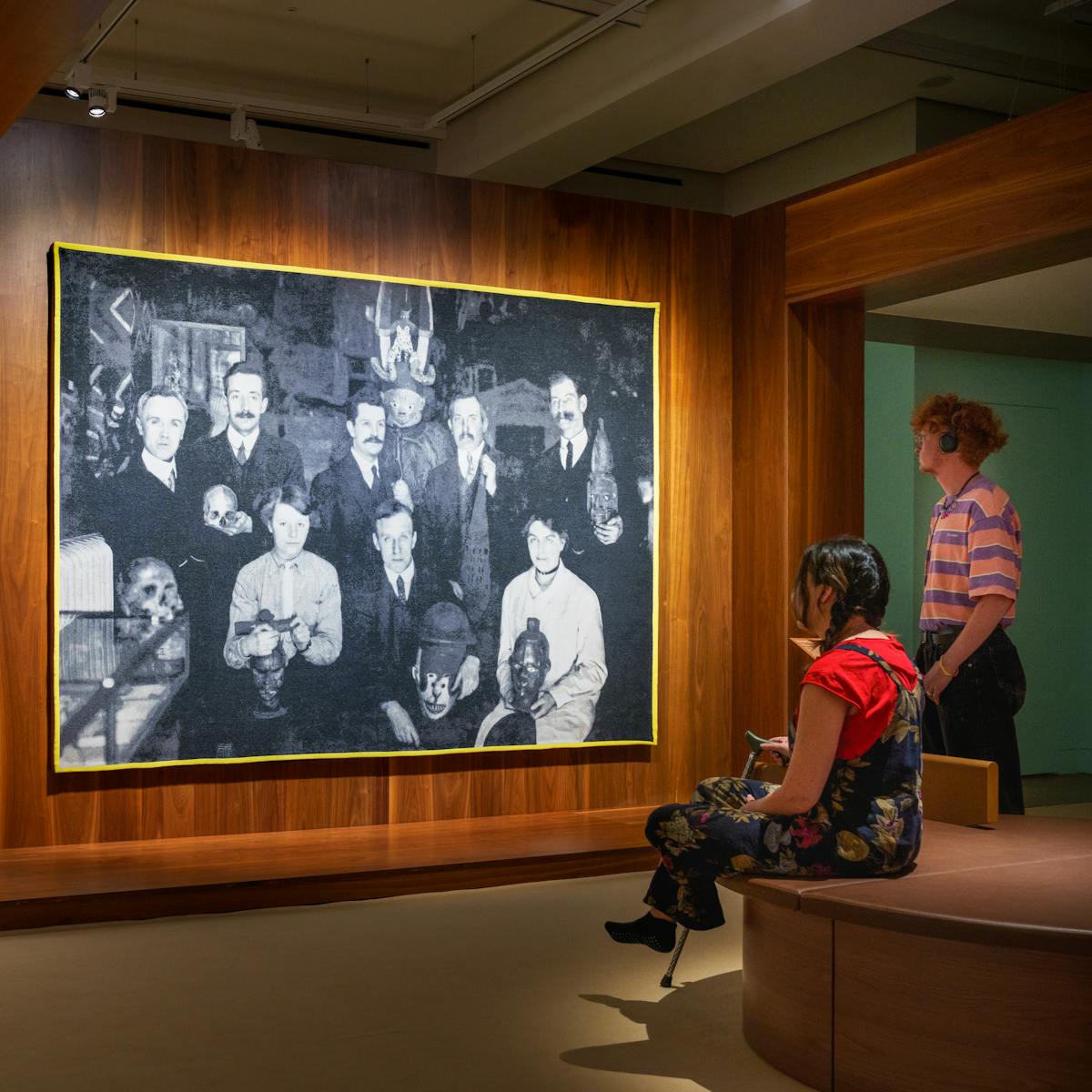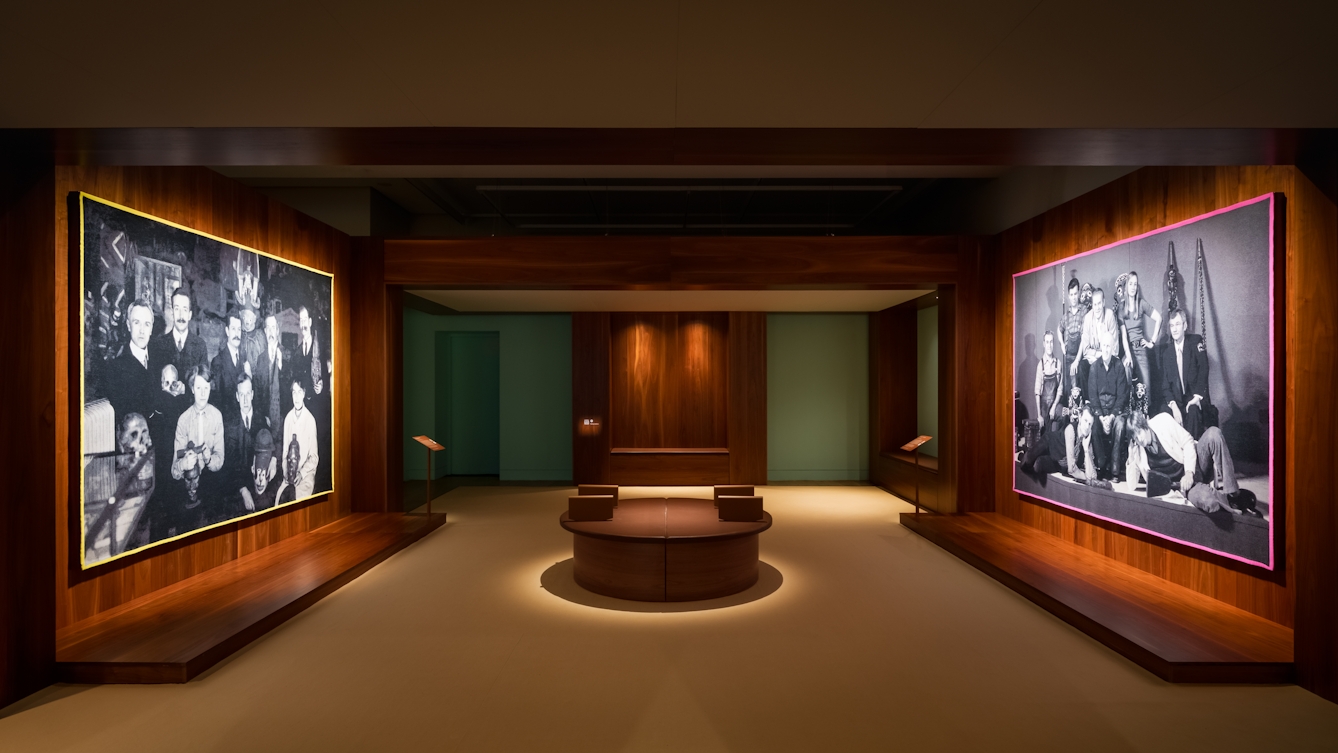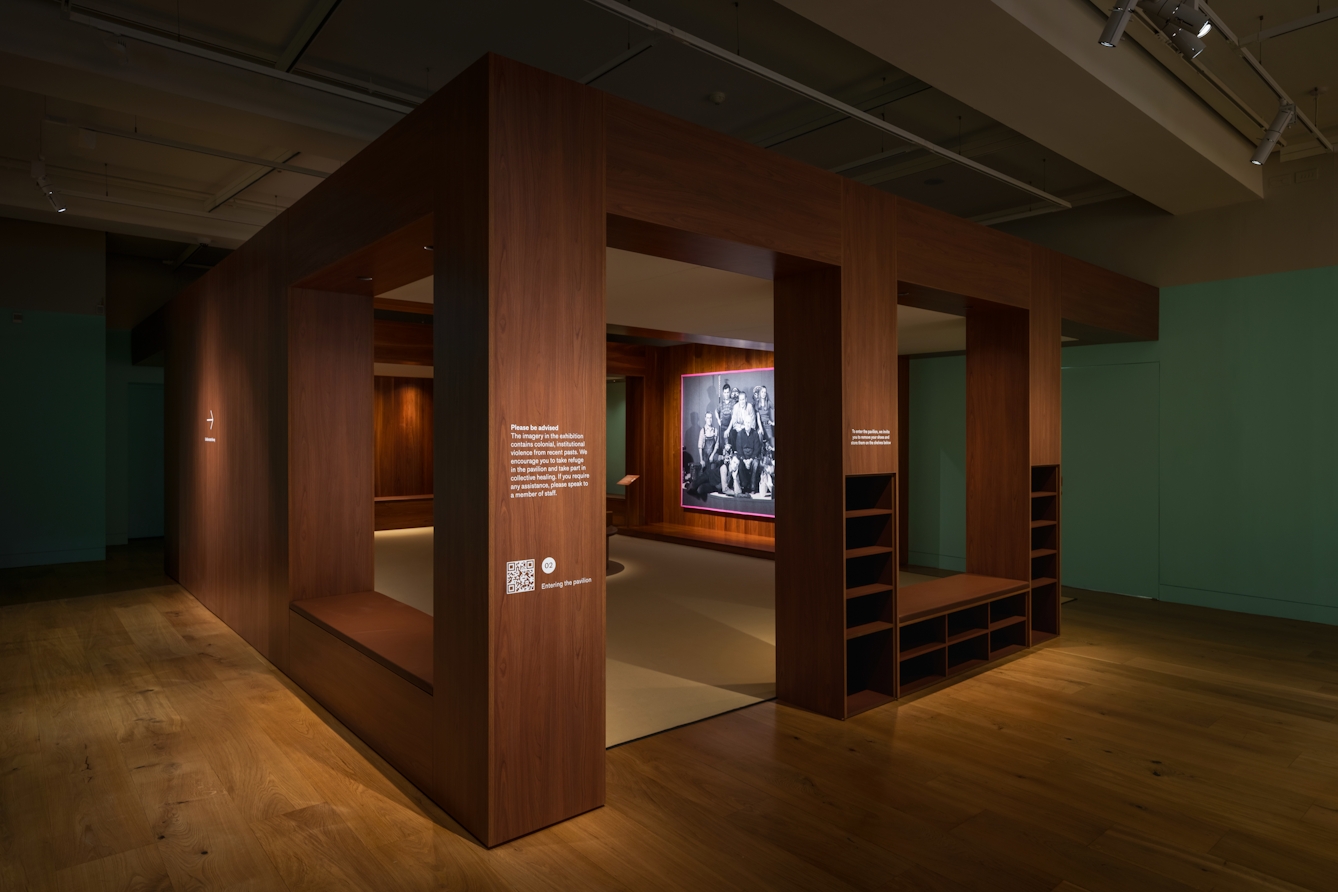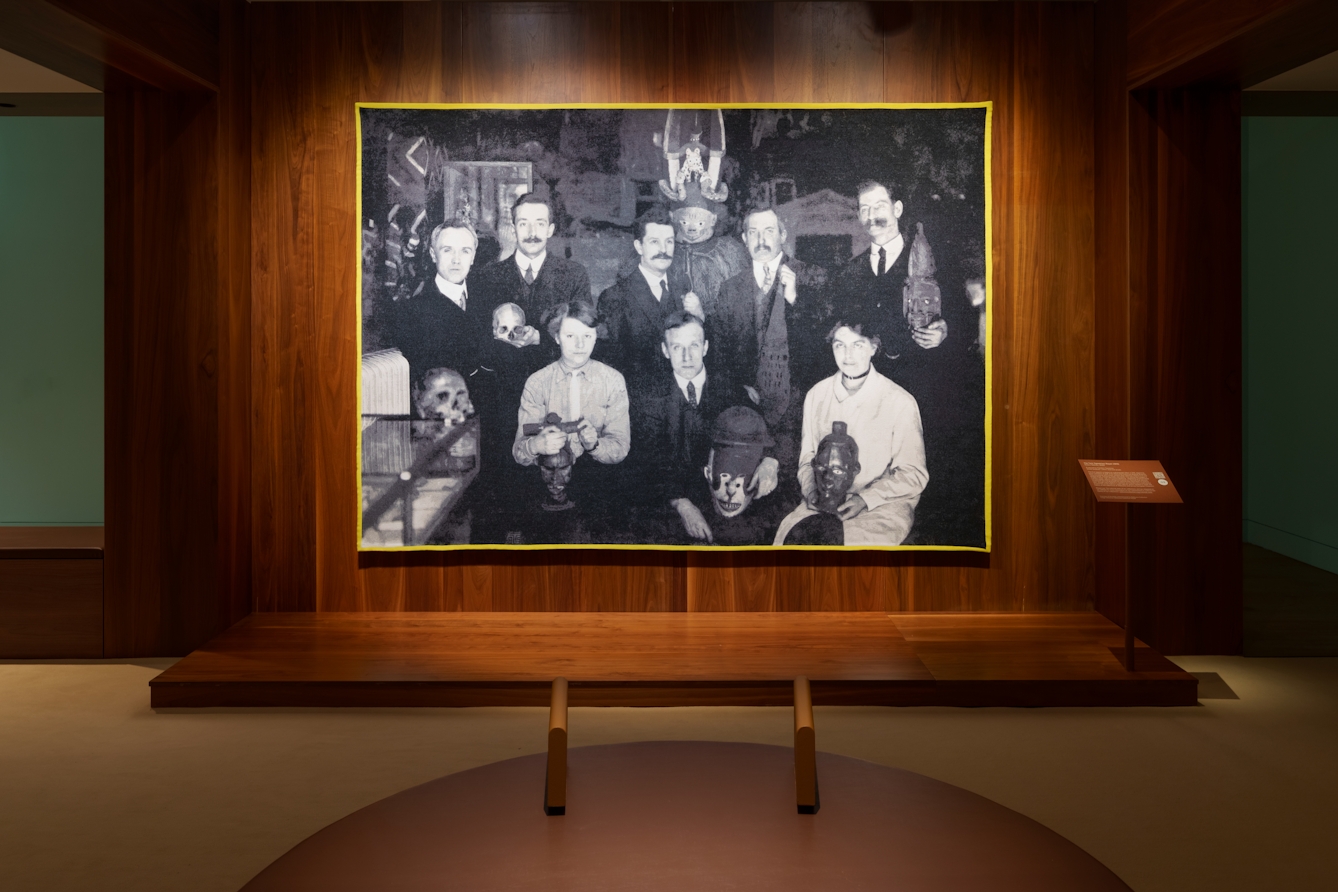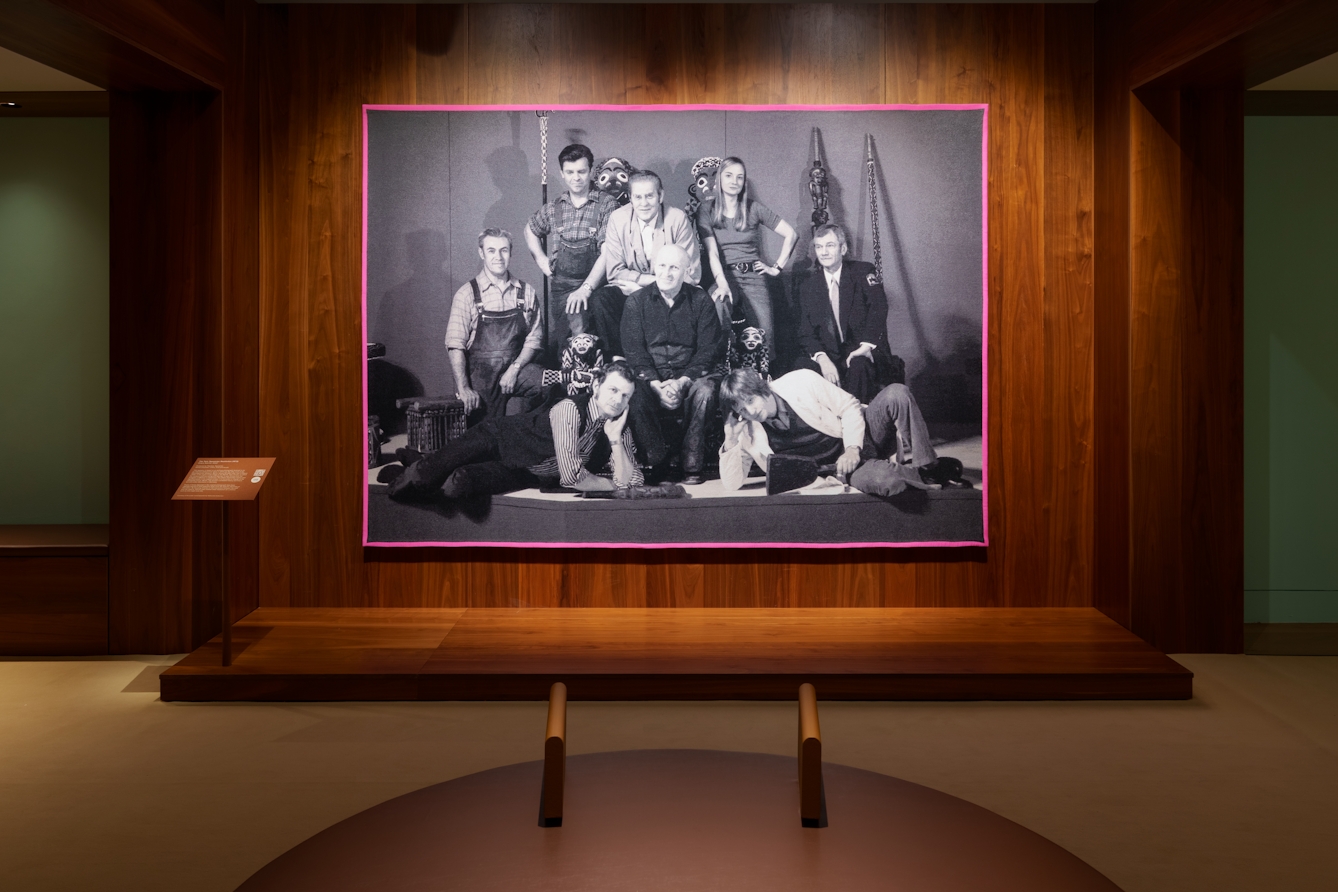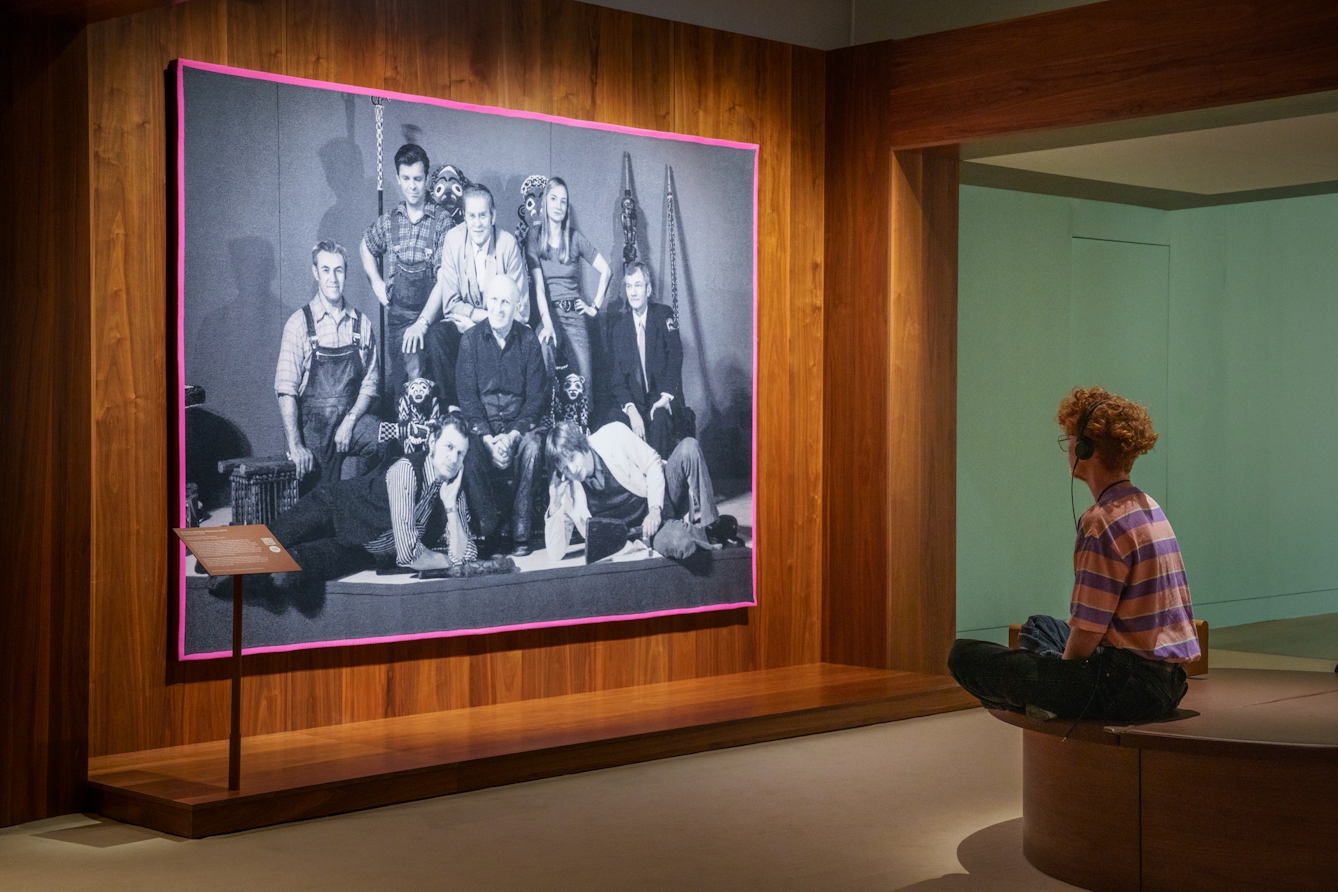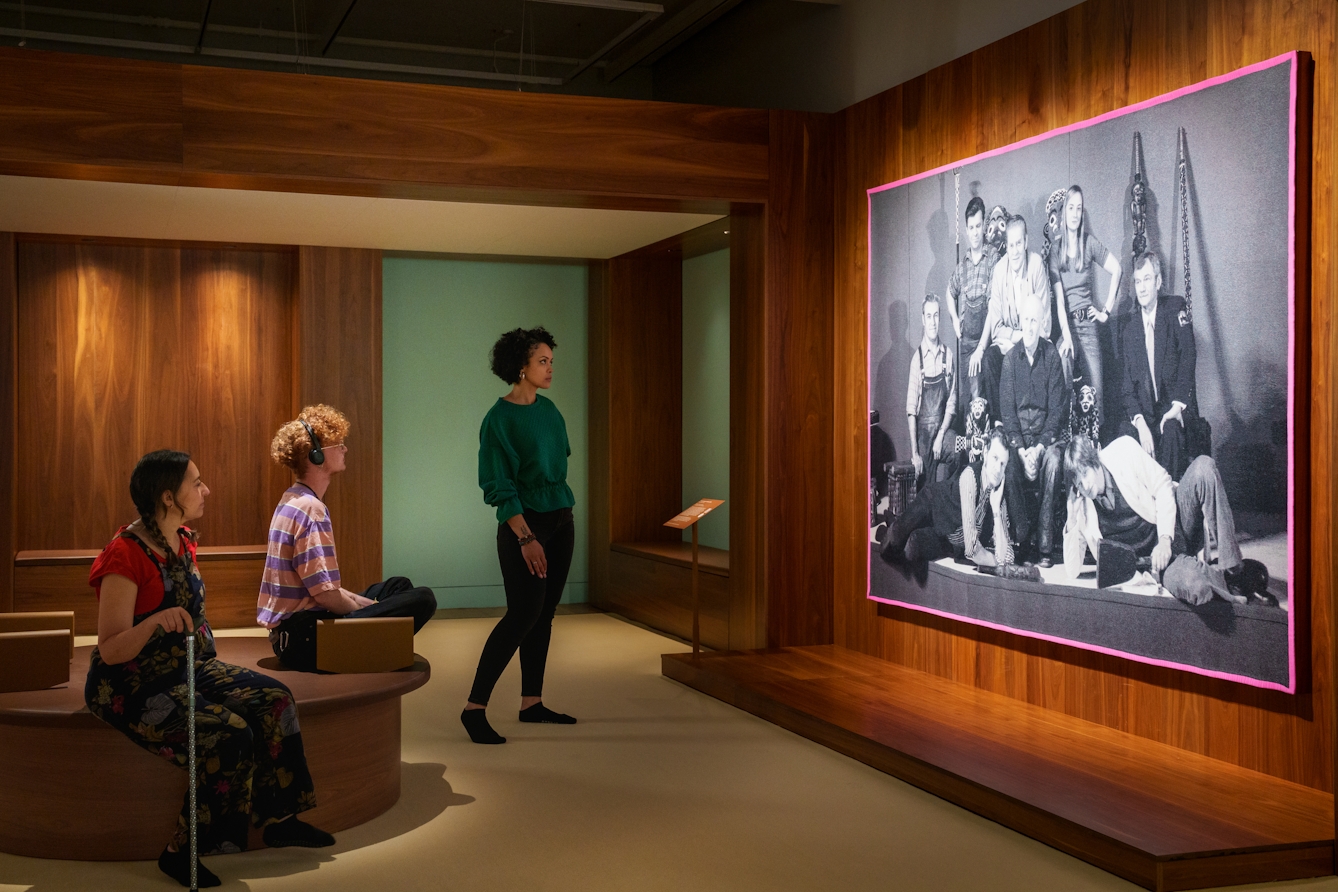‘The Healing Pavilion’ is a new art commission by British-Kenyan visual artist Grace Ndiritu. It radically reimagines what textiles and architecture can do in a museum burdened by colonial history. It is deeply connected to Ndiritu’s ongoing body of work, ‘Healing The Museum’ which she began in 2012.
The installation consists of two tapestries within a site-specific structure, inspired by Zen Buddhist temples in Japan. It is designed to re-activate the museum as a space to encounter, contemplate, ask questions, exchange, listen, share and meditate.
‘The Twin Tapestries’ are based on archival images from Wellcome Collection and the Ethnologisches Museum, Berlin, titled ‘Repair (1915)’ and ‘Restitution (1973)’, respectively. They ask what has changed since these photographs were taken and reveal violent pasts and hidden power dynamics at the foundation of Western museology, while reflecting attitudes and practices towards African objects in many European museum collections.
Lined with walnut panels taken from Wellcome Collection’s former ‘Medicine Man’ gallery, which closed shortly after this exhibition opened, the pavilion embodies a physical transformation of the past. Through her practice, Ndiritu asks how we might energetically and architecturally reinvent the role of contemporary museums and transform these institutional spaces.
The exhibition is accompanied by an audio walkthrough and guided meditation from the artist to immerse visitors within the sanctuary-like structure of the pavilion.
‘The Healing Pavilion’ is curated by Janice Li and Emily Sargent.
